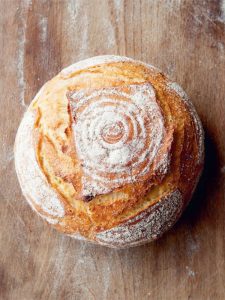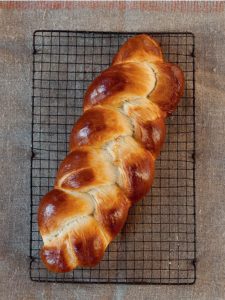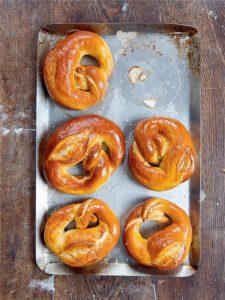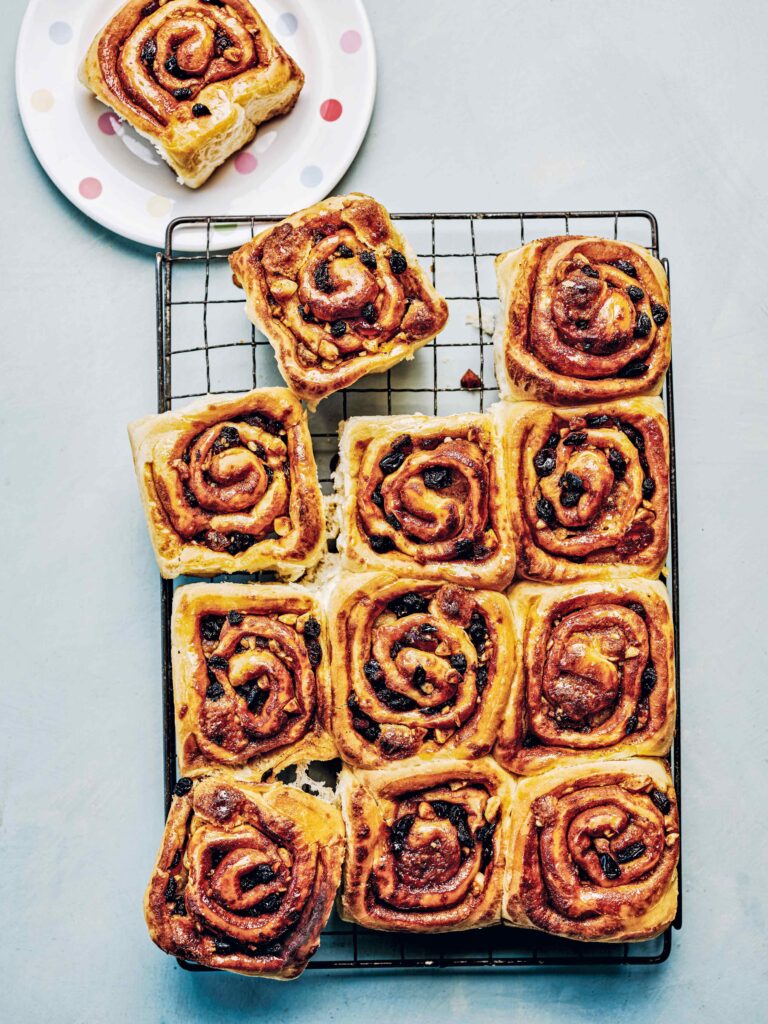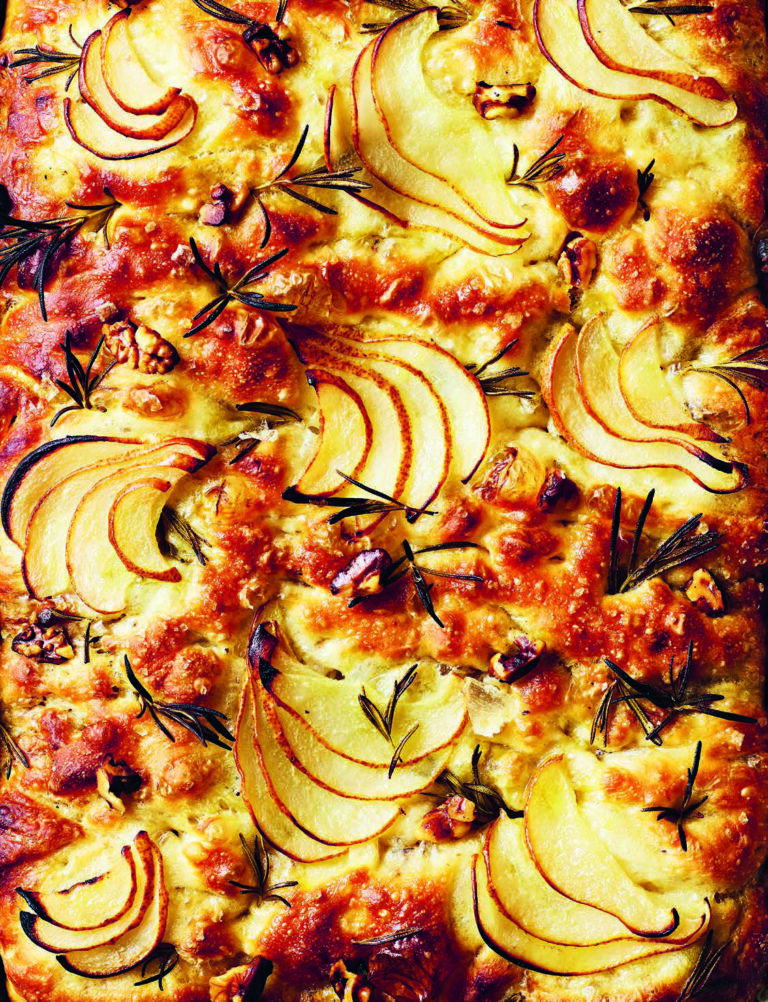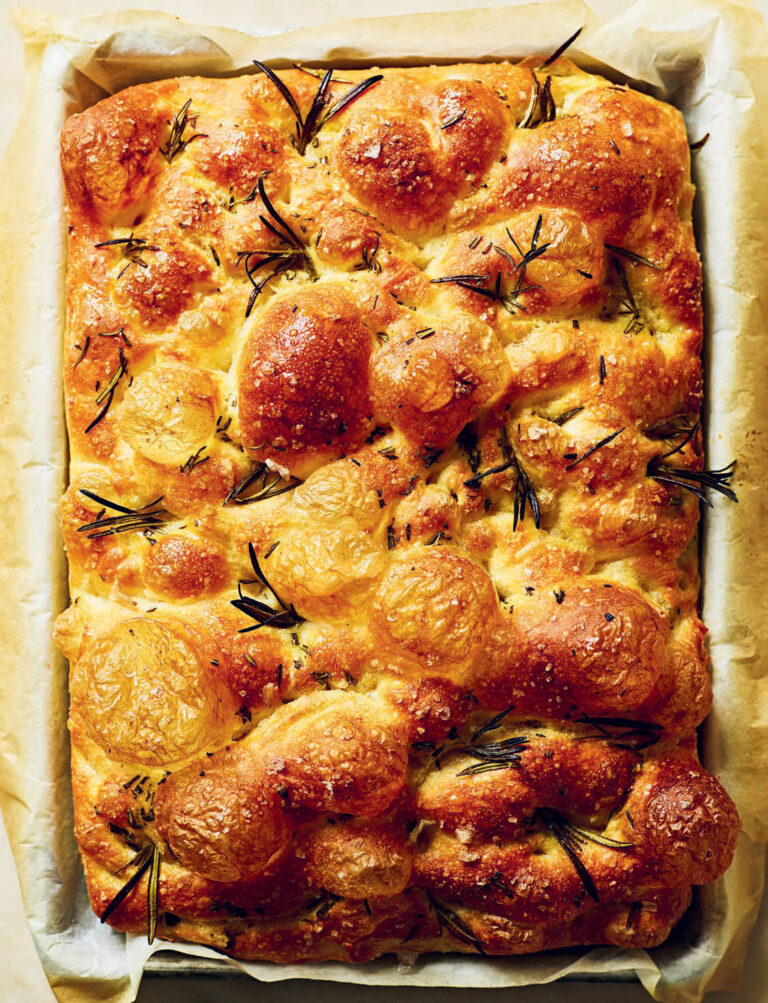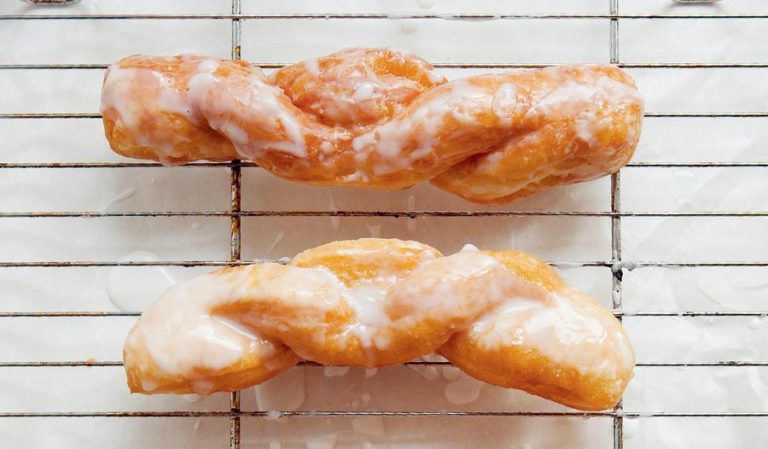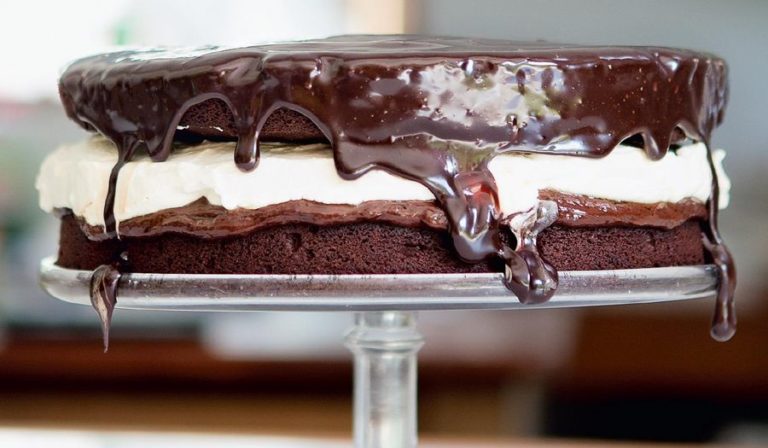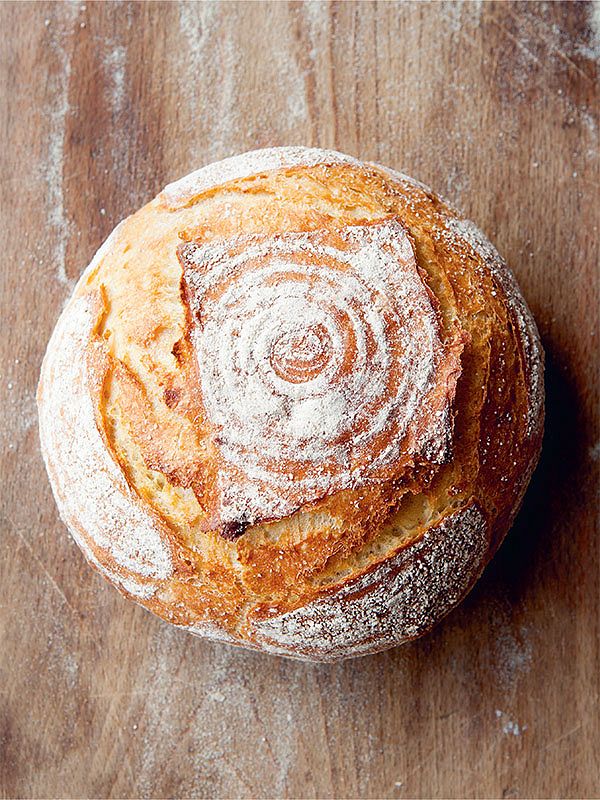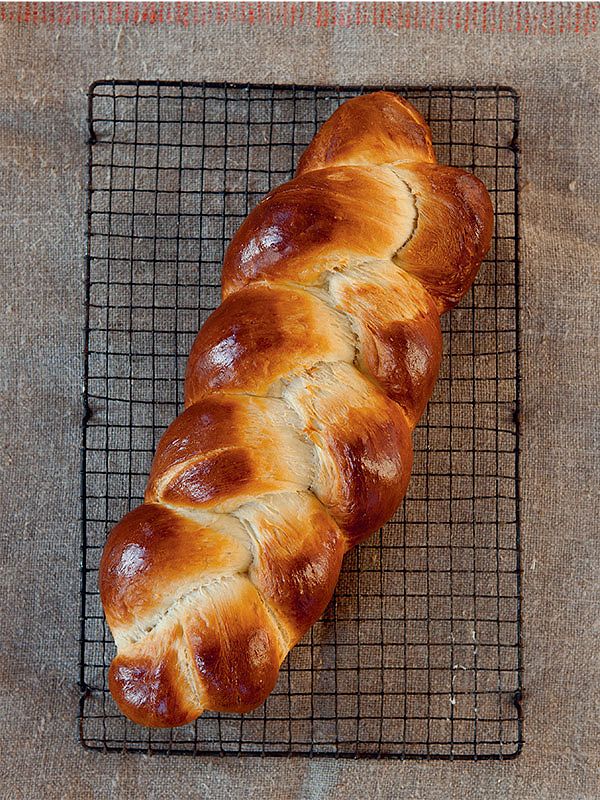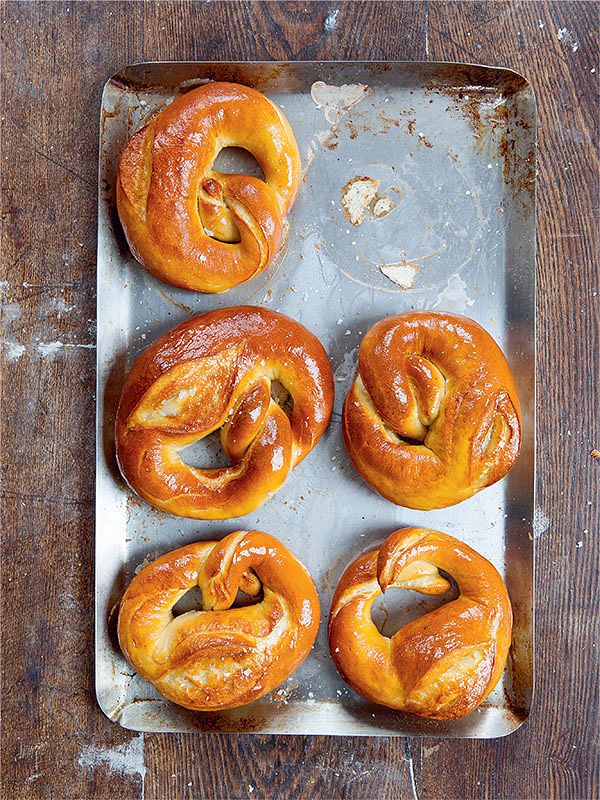Soft or Crusty Rolls
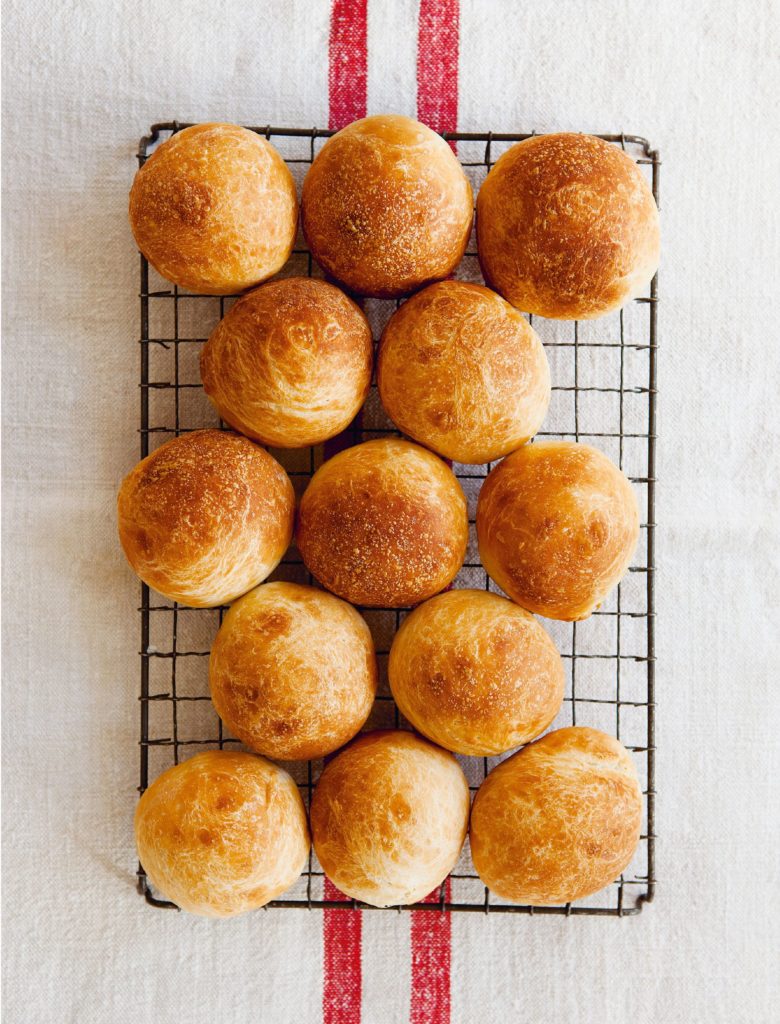
This simple no-knead recipe for bread rolls allows you to choose between a crusty or soft crust, for a delicious roll just how you like it.
From the book
Buy From
Introduction
In Glasgow, every wee café and newsagent sells a well-fired white roll with super-light insides and a dark, thick crust. This is where I like to keep my square sliced sausages. But I accept that lots of people like their rolls fluffily soft, inside and out. This recipe will satisfy both tastes and you only need to alter one aspect – the oven temperature.
The following principle might seem a little odd at first: for a thinner and softer crust, you want to bake at a higher temperature. This is because the crust gets thicker the longer the bread stays in the oven. So, if you want a bread that is cooked through properly, you need to get the heat to the middle quickly before the crust has a chance to thicken up. The best way to do this is to turn your oven up.
Ingredients
| 500g | strong white flour |
| 20g | caster sugar |
| 10g | salt |
| 1 x 7g | sachet fast-action yeast |
| 330g | milk at room temperature ( full-fat if possible) |
| oil for greasing |
Method
Time spent in the kitchen: 5–10 minutes. Time taken altogether: 3–3½ hours.
1. In a large bowl, weigh the flour and caster sugar together. With your fingers, rub in the salt at one edge of the bowl and the sachet of dried yeast on the opposite side. (Remember: the salt can stop the yeast working.)
2. Add the milk to the dry ingredients, and mix together until it forms a coherent dough (use your dough to mop up any flour sticking to the side of the bowl). Cover your bowl with a damp tea towel or cling film and rest in a warm place for about 30–40 minutes, or until noticeably increased in size.
3. Wet the fingers of one hand, slide your fingertips between the bowl and the dough and fold the dough in half. Turn the bowl a quarter turn, and repeat until you have removed all of the air and it is noticeably smoother. Cover your bowl again, and rest the dough for a full hour, or until at least doubled in size.
4. Scrape the dough out on to a lightly floured surface and using floured hands, roll it up into a sausage shape. Cut the sausage in half and in half again. Divide each piece of dough into three so you have 12 rough pieces of dough.
5. Shaping into a ball takes quite a long time, so don’t worry about all that faff for each of these wee pieces of dough. Place your piece of dough on a surface without any flour on it. Rub some flour into the palm of one hand, getting rid of any excess. Cup your floured hand as if you had to carry water in it, then turn it upside down keeping the same shape. Place this around your little piece of dough and make big circular movements with your hand. You should feel the dough turning with the friction between your hand and the work surface – this will tighten it nicely. Repeat, placing the rolls (because you rolled them – get it?) on an oiled baking tray.
6. Prove for a final hour, so they have doubled in size and are almost touching – it doesn’t matter if they do touch, you can tear them apart after baking. At least 20 minutes before they are ready to go in, preheat your oven to 230°C/gas 8 for soft rolls and 200°C/gas 6 for crusty rolls.
7. Bake for about 10–15 minutes or so for soft rolls – they should still have a good colour on them. Don’t worry if they feel crisp when they come out – they’ll soften right up in time. And for crusty rolls? Using a bread knife, slash the top of each roll in a cross shape before baking, then bake at the lower temperature for 20–25 minutes.
Reviews
4 Ratings
Have you tried this recipe? Let us know how it went by leaving a comment below.
Thank you for your rating. Our team will get back to any queries as soon as possible.
Please note: Moderation is enabled and may delay your comment being posted. There is no need to resubmit your comment. By posting a comment you are agreeing to the website Terms of Use.


